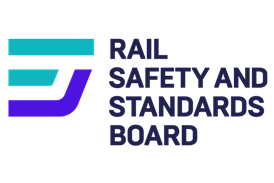PASSING the ICE workshops at Hamburg-Eidelstedt on April 6, we were struck by the large number of power cars awaiting attention. Later that day we learnt that a problem with welds on traction linkages between the power car body and bogies had led to 13 units being withdrawn. With safety still high on the media’s agenda following the derailment on February 6 of an overnight express at Brühl near Bonn in which nine people died, German Railway’s decision to withdraw some of the ICE fleet was understandable. DB hurriedly pressed ICE-T sets and loco-hauled stock into service to cover.
DB is all the more conscious of safety problems now that the Public Prosecutor’s office in Lüneburg is studying the 300 page official report into the catastrophe at Eschede on June 3 1998 when an ICE1 derailed and struck a bridge that collapsed onto the train, resulting in 101 deaths and 100 injuries (RG 7.98 p449). Prepared by the Fraunhofer Institute, the report blames wear on the tyre of a resilient wheel as the cause. A crack had developed inside the wheel, and stresses in the tyre in its worn condition finally resulted in its disintegration, leading to the derailment and its horrific consequences.
Of particular interest are the report’s findings about the limits of wear for resilient wheels. Bear in mind that the tyre in a resilient wheel is a load-bearing structure in its own right. When new, the wheel diameter was 920mm, and the former German Federal Railway had set the tolerance for the minimum diameter at 854mm. The wheel in question had worn to a diameter of 862mm, but the Fraunhofer Institute suggests that the wheels should not have been allowed to remain in service with a diameter less than 880mm. DB AG, which shortly after the accident replaced all resilient wheels on ICE1 sets with solid wheels, has noted that this is an opinion in the report and not a proven requirement.
The Public Prosecutor is reported as suggesting that use of resilient wheels with rubber inserts on ICE1 trains had not been investigated sufficiently before they were authorised for service, although technology existed at the time to carry out more detailed work. Stress regimes and fatigue modes in particular had not been assessed properly, with inadequate laboratory and running trials. After the wheels had been fitted, checks for internal cracks had not been introduced.
A number of background reports and annexes accompany the main report, and more are awaited. Braunschweig Technical University is preparing reports on the pointwork and bridge at Eschede, and Aachen Technical University has still to deliver a report on the design of the aluminium-bodied ICE1 trailer coaches.
The possibility of manslaughter charges remains, and the Public Prosecutor is considering charges of neglect relating to the introduction of resilient wheels. Pinning responsibility on individuals will be impossible, because large numbers of people will have been involved in development, testing and approval over a considerable period of time.
DB points out that the Type 64 resilient wheels had been in service for six years before the accident, during which time they accumulated 10 billion km without an incident, and that supplier Vereinigte Schmiedewerke Verkehrstechnik had confirmed their suitability for use after trials before they were put into service. Interestingly, the report has apparently not called into question the design principle of the resilient wheels. So far, DB has rejected claims that its staff can be held responsible.
- ICE3 trains due to enter service this summer may face similar operating restrictions to those applying to the ICE2 sets, which cannot run at full speed with the driving trailer leading because of the risk of side winds lifting the vehicle off the track. ICE3 has distributed power, so the leading car is considerably lighter than the power car of an ICE1. Side winds of 80 km/h could threaten to overturn the leading car at full speed, and the EBA is likely to apply a 200 km/h limit in these circumstances.




















